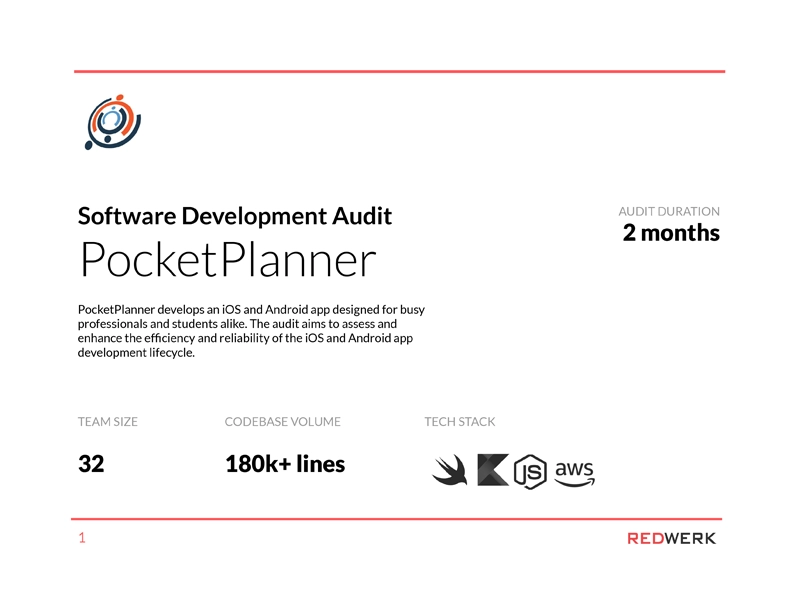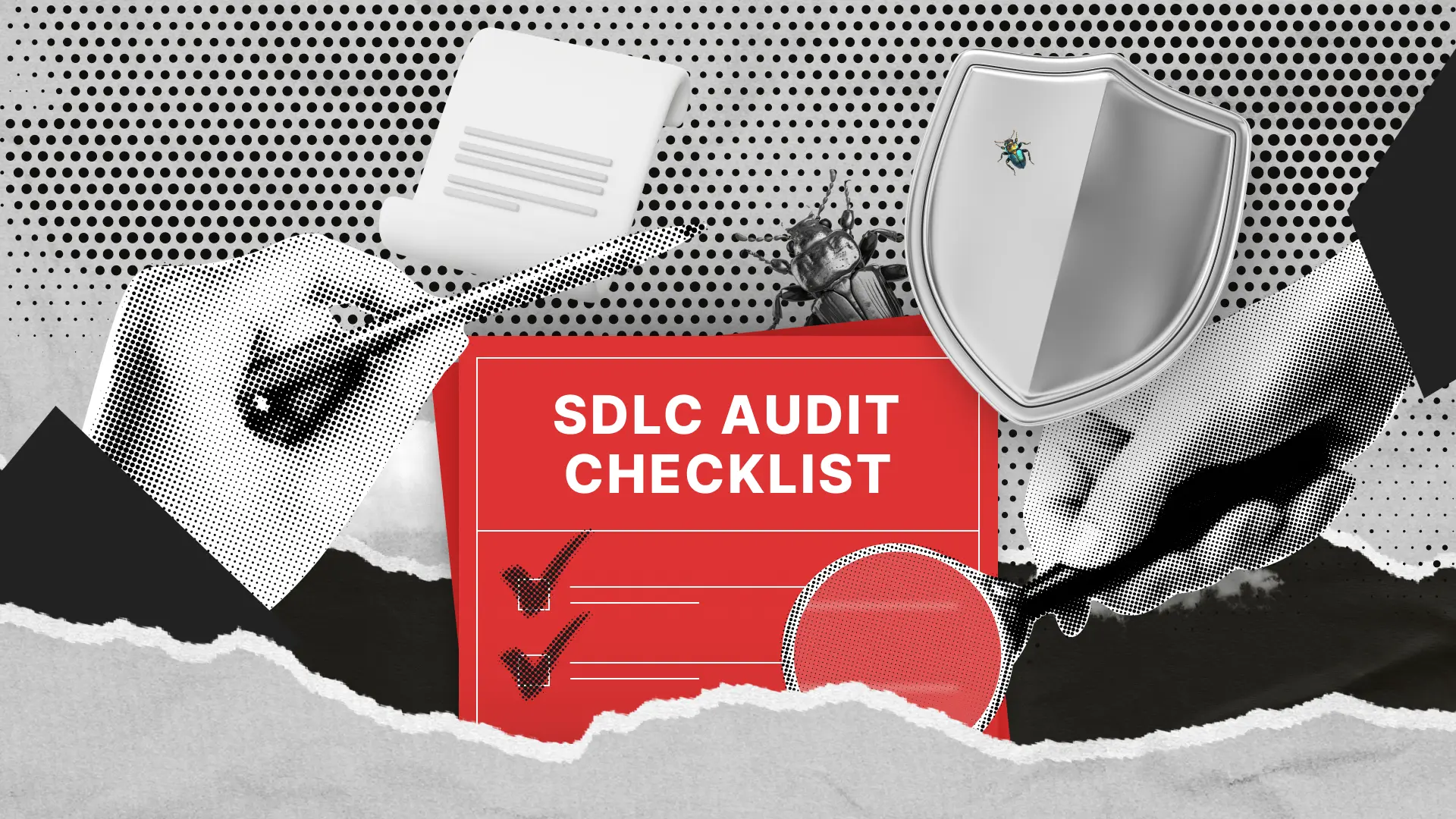It’s a given that we all need to be confident in our products & IT infrastructure, not only on paper, but in reality as well. If software security is critical to your business model, then you know you can’t solely rely on ISO certifications (besides, they’re already a major pain in the neck to deal with).
Plus, if you’re growing fast, your team is probably stretched too thin, and you’re all probably juggling multiple hats—client demands, tight deadlines, the looming shadow of the SaaS transition. In these scenarios, a software development audit is paramount, and can no longer be put off. It just needs to be done, and it could be your secret weapon to tame all the chaos.
So you may be wondering, ‘What is a software audit, and what does it look like when done right?’ Within our software development lifecycle (SDLC) checklist, we’ve shared our tried-and-true framework on how to audit software. By the end of this article, you’ll understand what processes and aspects need to be reviewed, and you’ll leave with an actionable plan to get started. Let’s go!
Coding Standards & Practices Evaluation
Inconsistent coding practices can lead to unexpected and difficult-to-diagnose software behavior. This, in turn, makes it challenging to maintain and evolve your product. Poorly written code silently accumulates technical debt—a hidden cost that makes future updates much more expensive. See how we reviewed a network mapping app and helped increase its maintainability by 90%.
To secure the quality and maintainability of your software, make sure to continuously audit the following aspects:
Compliance:
- Verify compliance with applicable industry standards (e.g., GDPR, HIPAA, PCI DSS)
- Assess the effectiveness of monitoring processes for compliance adherence
Coding Guidelines:
- Evaluate adherence to internal coding standards and best practices
- Examine code for adherence through code reviews and automated checks
Version Control:
- Review commit frequency and quality
- Assess the effectiveness of branch management practices for features and bug fixes
Dependency Management:
- Verify the use of tools like npm and pip for dependency management
- Examine the process for identifying and applying security updates
Code Reviews:
- Evaluate the thoroughness of code reviews and the quality of feedback provided
- Assess the level of collaboration and knowledge sharing during code reviews
Code Ownership:
- Determine clear ownership and accountability for code changes
- Assess the effectiveness of the process for assigning and managing code ownership
Continuous Learning:
- Examine evidence of developer training and professional development related to programming best practices
- Assess the availability of resources and opportunities for continuous learning
Quality Assurance Practices Evaluation
How confident are you in your quality assurance (QA) process? Inadequate testing can lead to the release of buggy software, which then causes customer dissatisfaction, data loss, or financial deprivation. Let’s also not forget that discovering bugs in post-production often leads to costly rework. Suddenly, your carefully planned timeline is thrown into chaos. To mitigate these risks, you need to establish and consistently verify the effectiveness of your QA efforts. Here are the ways to do just that.
Testing Strategy:
- Verify comprehensive test coverage across unit, integration, system, and acceptance testing levels
- Assess the adequacy and effectiveness of the overall testing strategy
Test Case Design:
- Review test cases for inclusion of positive, negative, edge cases, and boundary conditions
- Evaluate the quality and thoroughness of test case design
Regression Testing:
- Examine the extent of test automation for regression testing
- Assess the effectiveness of regression testing in detecting and preventing regressions
CI/CD Integration:
- Verify the integration of automated testing within the CI/CD pipeline
- Evaluate the effectiveness of automated testing in preventing defects from reaching production
Defect Tracking:
- Review the process for documenting, prioritizing, and resolving defects
- Assess the timeliness and effectiveness of defect resolution
Testing Environment:
- Verify the consistency between test and production environments
- Evaluate the impact of environmental differences on testing results
User Feedback:
- Examine the process for incorporating user feedback into the testing process
- Assess the effectiveness of user feedback in improving software quality
Security Measures Evaluation
Your company’s intimate information requires serious protection. This is everything from customer data, to financial records, to the very ideas that drive your innovation. You certainly don’t want them lying wide open for anyone to grab. But that’s a possible scenario when your security posture is weak. Not only can it lead to devastating financial losses and crippling legal battles, but it can also shatter your reputation and leave your customers feeling betrayed.
A professional software development audit will not only help you avoid trouble, but enable you to build a stronger, more resilient business. Here are some ways to weave security into every step of your software development process.
Code Access Control:
- Verify secure code access management and offboarding processes
- Assess the effectiveness of controls to prevent unauthorized access to code repositories
Workstation Security:
- Examine workstation security measures, including password protection, encryption, and antivirus software
- Evaluate the effectiveness of these measures in mitigating security risks
Software Licensing:
- Verify compliance with software licensing agreements
- Assess the controls in place to prevent the use of unlicensed software
Secure Configurations:
- Review server and application configurations for adherence to security best practices
- Identify and document any misconfigurations that could pose security risks
Third-Party Libraries:
- Evaluate the process for monitoring third-party libraries for vulnerabilities
- Assess the timeliness of applying security updates to dependencies
Security Policies:
- Assess developer awareness of security guidelines and secure coding practices
- Examine the effectiveness of training programs and awareness campaigns
Incident Response:
- Evaluate the organization’s preparedness for handling security breaches or vulnerabilities
- Review incident response plans and procedures for effectiveness
Documentation Review
Do you wish your team members learned more from past projects, whether those experiences were successes or failures? Do you yearn for new developer onboarding to be faster and less painful? If you answered yes to either of these, then you need an effective documentation process. It’s difficult to imagine auditing a SDLC without a careful review of documentation.
Clear and concise documentation ensures everyone involved in the project—from developers and designers to stakeholders and clients—is on the same page. At Redwerk, we meticulously examine project documents to identify potential risks and issues that could impact your project’s success. Here are the aspects that we always check.
Requirements Documentation:
- Evaluate the completeness, accuracy, and traceability of requirement specifications and user stories
- Assess the clarity and understandability of requirements for development teams
Design Documentation:
- Review the availability and quality of architecture diagrams, system flowcharts, and design rationale
- Assess the effectiveness of design documentation in communicating the system design
Technical Documentation:
- Evaluate the clarity and comprehensiveness of technical documentation regarding system interactions and component integration
- Assess the availability and accessibility of technical documentation for developers and support teams
API Documentation:
- Evaluate the usability and clarity of API documentation, including authentication and interaction procedures
- Assess the effectiveness of API documentation for developers and third-party integrations
User Manuals:
- Review the comprehensiveness, accuracy, and usability of user guides and help documents
- Assess the effectiveness of user manuals in assisting users with software operation and troubleshooting
Deployment and Configuration Guides:
- Evaluate the completeness and accuracy of deployment and configuration guides
- Assess the availability of clear and concise instructions for system administrators
Changelogs:
- Verify the availability and accessibility of changelogs and release notes
- Assess the effectiveness of changelogs in tracking changes and communicating updates to stakeholders
Version Control Guidelines:
- Review the documentation of branching and merging workflows in the version control system
- Assess the effectiveness of these workflows in managing code changes and preventing conflicts
Knowledge Transfer:
- Evaluate the availability and effectiveness of onboarding documentation for new team members
- Assess the processes for knowledge sharing and documentation within the development team
Project and Resource Management Evaluation
Software projects tend to succumb to scope creep. Too often, last-minute changes & ideas are being added to the project scope, leading to budget overruns and missed deadlines. While skilled project managers strive to maintain control, the daily grind can easily obscure the big picture. In such cases, an independent SDLC audit would offer a valuable external perspective.
By analyzing plans & resource allocation, auditors identify risks and bottlenecks, enabling timely mitigation. Also, a software auditor can identify gaps in communication and recommend improvements to foster better teamwork. Drawing on almost two decades of hands-on software delivery management experience, Redwerk’s auditors focus on reviewing these key areas:
Methodology:
- Verify the alignment of the chosen development methodology (Agile, Waterfall, Lean, Iterative) with project goals and constraints
- Assess the appropriateness and effectiveness of the chosen methodology
Team Structure:
- Review the definition of roles and responsibilities within the development team
- Assess the clarity and effectiveness of team roles in achieving project objectives
Task Allocation:
- Evaluate the balance of workloads across team members and departments
- Assess the alignment of tasks with individual team members’ skills and expertise
Requirements Gathering:
- Review processes for documenting, validating, and managing stakeholder requirements
- Assess the completeness, accuracy, and traceability of documented requirements
Progress Tracking:
- Examine the tools and techniques used for monitoring project milestones and progress
- Evaluate the effectiveness of these tools in providing timely and accurate project status updates
Risk Management:
- Review the process for identifying, assessing, and mitigating project risks
- Evaluate the effectiveness of risk management strategies in addressing potential challenges
Communication Practices:
- Assess the effectiveness of communication channels within the development team and with stakeholders
- Evaluate the clarity and timeliness of communication throughout the project lifecycle
Metrics and Reporting:
- Review the use of metrics to track project performance and generate progress reports
- Assess the effectiveness of these metrics in providing valuable insights for project management
Project Closure:
- Examine the activities conducted for project handover and knowledge transfer
- Assess the effectiveness of these activities in ensuring a smooth transition and knowledge preservation
Lessons Learned:
- Review the process for documenting and analyzing lessons learned from past projects
- Assess the effectiveness of using these lessons to improve future project management practices
Deployment and Release Process Evaluation
Deployment process evaluation should be high on your priority list. Why? For several reasons. For one, inadequate testing during deployment can result in software bugs reaching production, which ends up disappointing your customers. Also, improper data migration or rollback procedures can lead to data loss or corruption, causing significant business disruption.
A vulnerable deployment process is an open invitation to cyberattacks. To mitigate these challenges, Redwerk’s lead software architects (with over 14 years of experience) assess the following areas during audits:
Automated Deployment:
- Verify the reliability and consistency of automated deployment processes
- Assess the effectiveness of automated deployment in reducing manual errors and improving release frequency
CI/CD Pipelines:
- Examine the setup and efficiency of the CI/CD pipeline for frequent and reliable releases
- Evaluate the effectiveness of the pipeline in automating build, test, and deployment processes
Release Planning:
- Review the structure and planning of features, bug fixes, and enhancements within the release cycle
- Assess the clarity and feasibility of release plans and their alignment with business objectives
Versioning:
- Examine the management of code versions and the use of tags for releases
- Assess the effectiveness of version control in tracking changes and enabling rollbacks if necessary
Pre-Deployment Testing:
- Evaluate the rigor of testing in staging environments before production releases
- Assess the effectiveness of pre-deployment testing in identifying and mitigating potential issues
Rollback Plans:
- Verify the existence of, and adherence to, rollback plans in case of deployment failures
- Assess the effectiveness of rollback procedures in minimizing downtime and mitigating the impact of deployment issues
Downtime Management:
- Examine strategies for minimizing downtime during releases
- Evaluate the effectiveness of these strategies in maintaining system availability and minimizing service disruptions
Data Migration:
- Assess the processes for ensuring data consistency across environments during deployment and upgrades
- Evaluate the effectiveness of data migration strategies in minimizing data loss and ensuring data integrity
Monitoring and Performance:
- Examine the use of monitoring tools to detect and address performance anomalies post-deployment
- Evaluate the effectiveness of monitoring as it relates to identifying and resolving performance issues promptly
Who Needs a SDLC Audit
Organizations that rely heavily on custom-built software, or ones that have intricate software ecosystems, will benefit the most from a SDLC audit. Also, companies operating in industries with strict regulations, such as healthcare (HIPAA), finance (SOX), or defense, often require audits to demonstrate compliance with security and quality standards. We at Redwerk see the highest demand in our software audit services from these types of organizations:
- KYC (Know Your Customer) Software Vendors: They operate in a highly regulated environment, often dealing with financial institutions, crypto exchanges, and other businesses that must comply with anti-money laundering laws and counter-terrorism financing regulations
- Fintech & Banking Companies: Handling sensitive financial information means a single security breach could result in serious legal and financial consequences
- Healthcare Startups: Patient data is highly sensitive and subject to strict regulations like HIPAA
- Rapidly Growing Startups: Processes that worked for a 5-person team no longer hold up when the team hits 50 or 100 developers, often leading to chaos
Major Reasons for a SDLC Audit
Let’s be honest: no one undergoes a SDLC audit just for fun. It’s an extensive process, and it requires lots of time and dedication. Think 200 hours or more, depending on your project scope. At the same time, it offers significant benefits beyond just compliance. SDLC audits provide valuable insights into the health and efficiency of your software development processes. It’s a necessary step for many companies seeking to:
- Optimize Productivity & Costs. Are our teams understaffed? What areas of our business does this hurt? Are we overspending on resources? A SDLC audit will help answer these questions, allowing you to identify and eliminate bottlenecks caused by resource misallocation.
- Scale. Can our current development practices keep up with our ambitious growth plans? Should we hire another security architect, or rather an AWS specialist? Going through a SDLC audit will provide the clarity you need.
- Improve Security Posture. Is our software truly secure, or are we just ticking boxes? Do our customers trust us with their data? Go beyond basic compliance by conducting a practical security audit performed by experienced developers.
- Preparing for Mergers & Acquisitions. Are we ready to attract the right acquisition partner? Can we demonstrate the maturity and robustness of our development processes? A software audit can provide the evidence, increasing your attractiveness and facilitating a smoother acquisition process.
Why Choose Redwerk as Your Software Auditor
Redwerk is a software development & auditing company that was established in 2005. Over 170 businesses from 22 countries have chosen us as their trusted technology partner. If this is your first time meeting us, we’d like to list a few reasons why we should top your vendor shortlist:
- We’re Practitioners, not Theorists. We don’t just audit software—we build it every single day. We’ve built complex SaaS solutions from the ground up. We have a solid track record in developing e-government solutions, which requires profound skills in software development, business analysis, DevSecOps, and QA. The software we develop is used by over 10 state and county public service agencies across the USA, and we also helped upgrade the European Parliament’s e-voting platform.
- Industry Recognition. Our commitment to excellence in the provision of quality services has been confirmed by the IAOP. In 2024, we also earned a spot in the Global Outsourcing 100.
- Flexibility & Responsiveness. We prioritize clear communication and flexibility, fostering true partnerships with our clients. If you were to ask them yourself, many of our clients say it feels like we’re one big team working towards a common goal.
- Reporting & Implementation. We’re here to help, we won’t just deliver you a report and disappear. Our audits come with actionable recommendations, and we can help you implement them, starting with the most critical fixes.
Contact us today to schedule a brief intro call, where we’ll discuss your project and see if we’re the right fit for each other. If we can help, we can also provide a free project estimation and guide you towards the next steps.
Grab your free software
development audit sample



